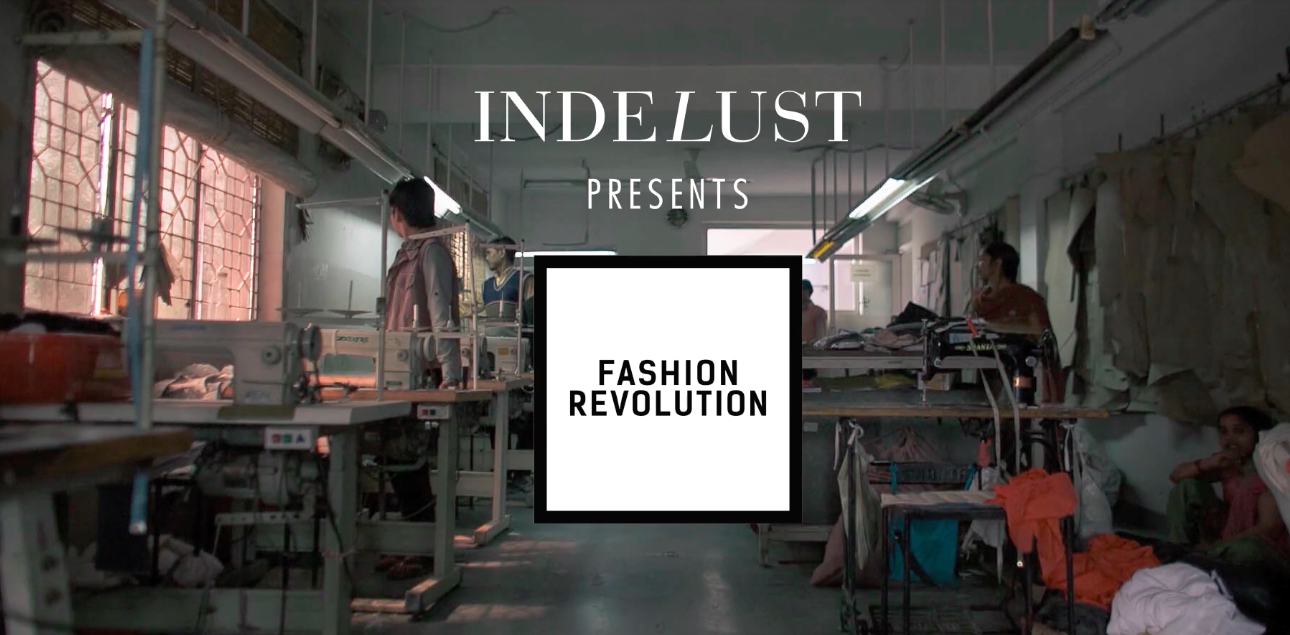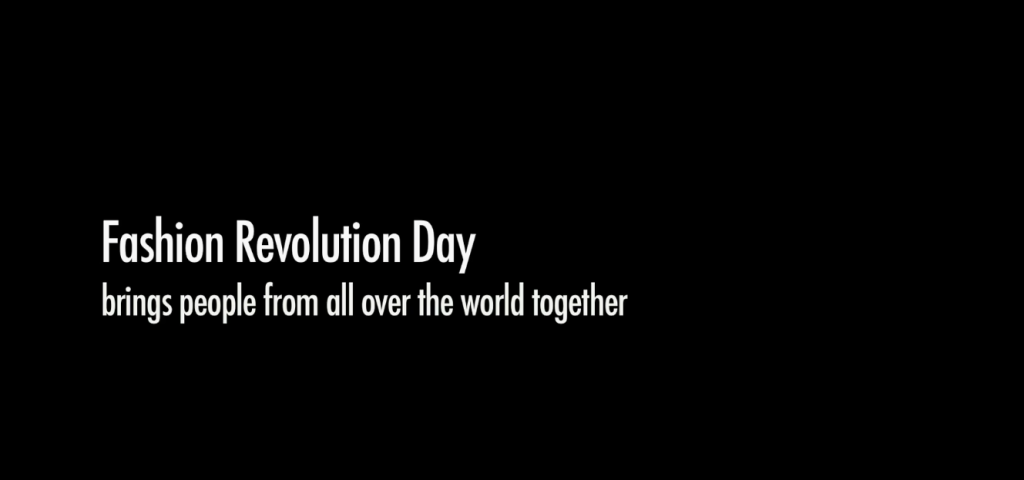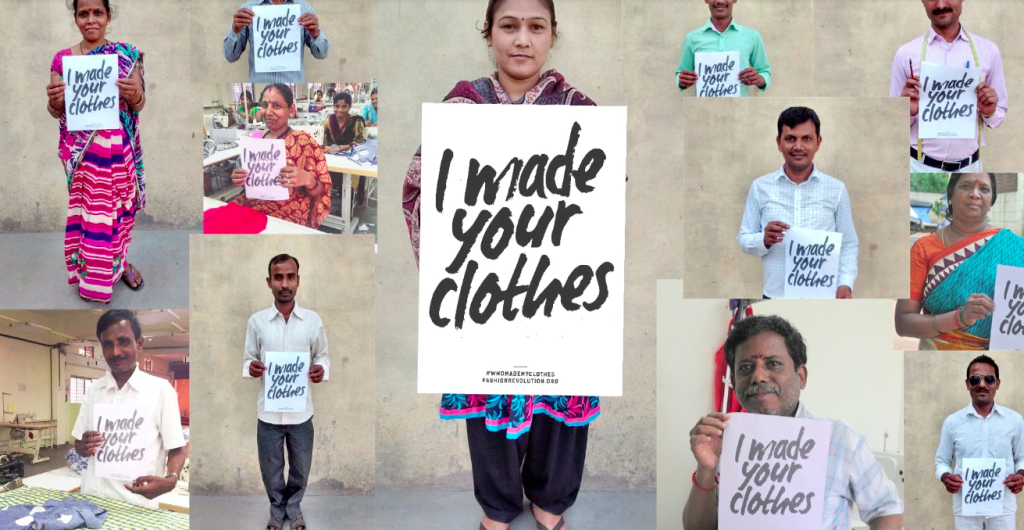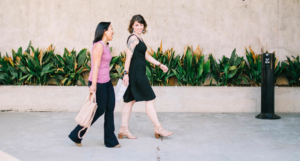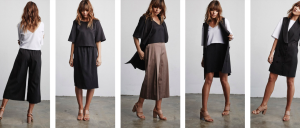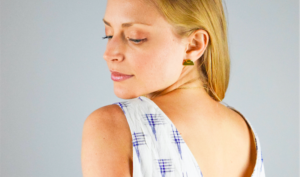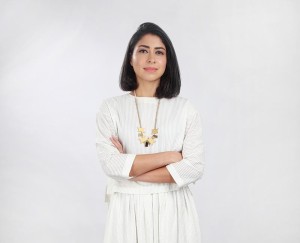
Sana Rezwan is an Indian fashion powerhouse. She, and her financier husband Nihar Sait, have singlehandedly carved out a market in the west for traditional designs from India, Pakistan, Sri Lanka, Nepal, and Bangladesh with their e-commerce destination Indelust.
She’s also a firm believer that her business should honor its artisans with ethics.
I caught up with her on the cusp of Fashion Revolution Day – a global initiative starting April 18 to bring more transprency to fashion by asking “Who made my clothes?” – about her vision, participation in FRD, and outlook on fashion.
I was blown away by her depth of knowledge and the business model she’s built for artisans.
Sana told me this story in an email interview.
________________________________________________________________
Telling the Indelust Story
You’ve worked for many luxury fashion brands. What inspired you to start Indelust?
I was inspired to start Indelust following the Rana Plaza disaster in 2013. I became committed to supporting and promoting the craft heritage and up-and-coming makers of the Indian subcontinent. The disaster really motivated me to create a platform where I could share a stronger social message and celebrate the handcraft traditions native to the region. At its core, Indelust is about fostering an emotional connection between the consumer and her purchase. We do this by telling the story of the independent designers and artisans who make what you wear, which is a refutation of everything that led to the Rana Plaza disaster. Given a choice, we believe people will support a production model that allows for the creation of beautiful things which also uplifts those involved in their production.
Indelust’s vision is to build global awareness of design originating from India. What makes Indian design special?
The history of Indian craft dates back to nearly 5000 years; from the Indus Valley Civilization where foreign and domestic trade flourished—playing an important role in the evolution of the different craft forms in India. These indigenous traditions have withstood the depredation of time and several foreign invasions, yet continue to exist to this day, mainly due to the open mindedness of the Indian craftsmen to accept and assimilate new ideas. Our objective at Indelust is to not only revive and preserve this plethora of crafts, but to ratify them. Our handpicked designers use these ancient techniques to create contemporary pieces that respect the past, reflect the present and withstand the future.
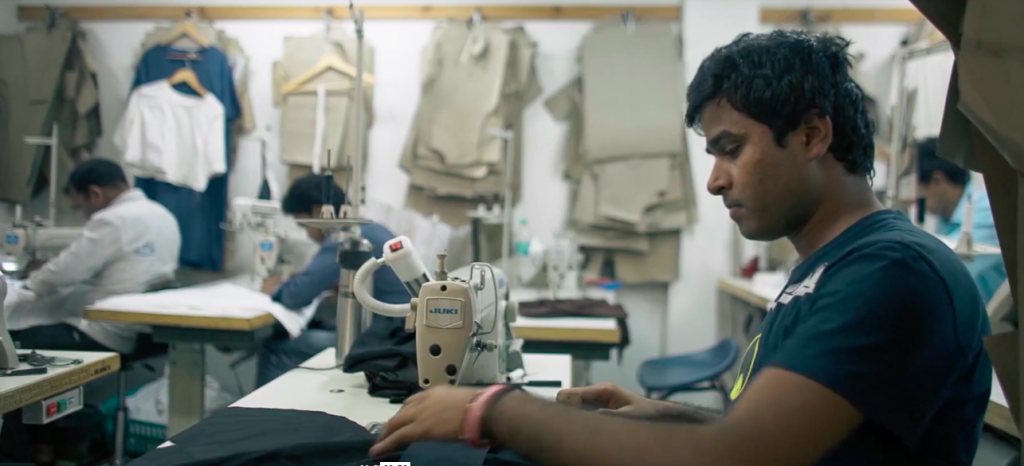
What are some traditional artisan practices in India that we don’t find in the west?
Embroidery has been an intrinsic part of Indian history and culture, with its origins shrouded in mystery and legend. Chikankari, for one, is a delicate and artful hand-embroidery done on light fabric— a Persian craft, originating from the Mughal Courts, which lead to the establishment of embroidery workshops where Chikankari was practiced and perfected. Rahul Mishra, a Woolmark Prize winner and one of Indelust’s favorite designers showcases his collections at Paris Fashion Week every season, parading the intricacies of this ancient craft. His collections primarily incorporate Chikankari detailing on blends silks, wool and cotton.
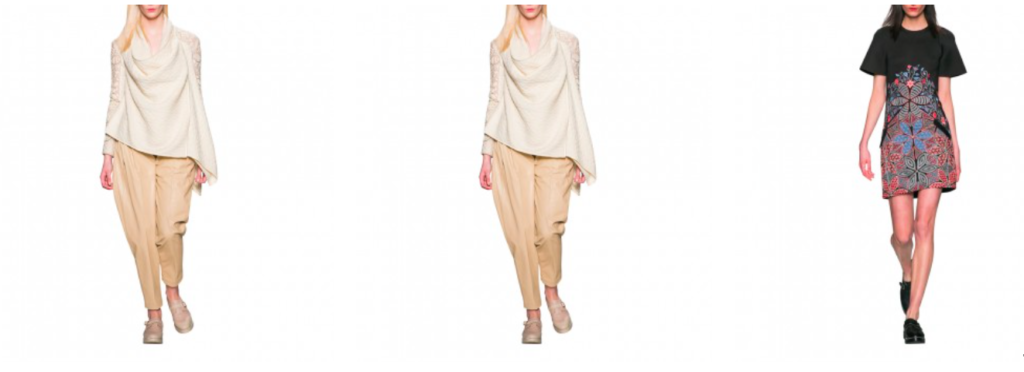
Kutch embroidery is one of the most easily identifiable styles of embroidery from Gujarat, characterized by the use of vibrant colors, mirrors, beads and intricate and extensive needlework that embellishes the entire fabric, which is usually cotton or silk. History traces the origin of Kutch embroidery back to the Mochis, a community of shoemakers, who used to work on royal textiles and decorative objects. Rina Agarwal of Ofrida uses restored vintage textiles from this region along with antique coins and to create one-of-a-kind accessories and handbags.
Originating from Bengal, Kantha is perhaps the oldest form of Indian embroidery, it can be traced back to the first and second A.D. Usually done in simple running and darning stitches to form a pattern both at the front and the back, the Kantha embroidery usually starts at the center of the fabric and proceeds outward, covering the whole surface with a variety of designs. Silver-gilt wire is occasionally used to enhance the embroidery. The most common use of this craft is found in traditional indian saris in vibrant colors but Abraham & Thakore have reinterpreted the kantha technique using monochromatic tones on a line of cushion covers that are all hand-embroidered.
Dhokra is a non–ferrous metal casting using the lost-wax casting technique, an ancient practice that has been used in India for over 4,000 years. It involves intricately patterning a clay core with wax ribbons and then coating it carefully with a mix of clay and hay, which is subsequently melted off. The cavity formed is filled with molten metal. Once solidified, the craftsman reveals the beauty of his creation by cautiously breaking open the outer clay shell. Vasudha Bhandari of Project Muzo visited artisans all over India to study their trade and markets before deciding to work with the craftsmen of Orissa who specialize in the dhokra technique. Her jewelry collection of hand beaten brass combined with colored threads is an attempt to offer a rare combination of traditional heritage and contemporary design.
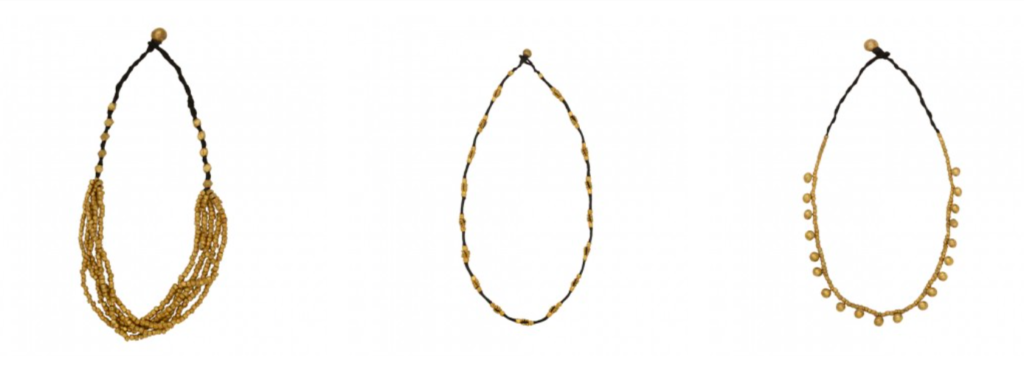
You work with Nest, an organization that supports brands with supply chain transparency. How does this partnership help Indelust?
We have a symbiotic relationship with NEST – we are committed to ethical fashion, and they are committed to helping fashion labels work with artisans and workers to produce sustainably. NEST vets each level of our suppliers manufacturing practices, which includes a review of their supply chain. Our suppliers are then asked to sign and comply with a ‘Code of Ethics’ that we create in partnership with NEST.
Ethical fashion is a bucket term for everything from sustainability, transparency, free trade, human rights, animal rights, etc. Do you focus on a particular cause?
All of these are important issues, but we wanted to focus on a cause that played to our core strengths and where our impact could be measured. Ethical fashion to us means supply chain transparency, which is inherent to our mission as a retailer and will continue to be a cornerstone of our business and partner manufacturers. That being said, we do our best to promote brands that are also environmentally conscious.
Stylistically speaking, who is the Indelust woman? Man?
Our customer can be considered a ‘global citizen’, someone who is intellectually curious and confident enough to take the best from different cultures and make it into their own style. They are urban, educated and socially responsible, but not necessarily passionate activists consumed by a cause. They are creatively and politically liberal. They love fashion, but aren’t dictated by trends and tend to combine contemporary labels with pieces that are seasonless. They are independent in their thinking, experimental and inspired by their travels around the world.
I recently traveled to India and observed the rich textures, colors, and patterns of everyday clothing. Do you adapt these designs for your consumers?
When I edit for the site, I gravitate towards an aesthetic that is pleasing to me—which is simplicity. I can say that Indelust is an interpretation of India through my lens and stays true to what fascinates me about my country.
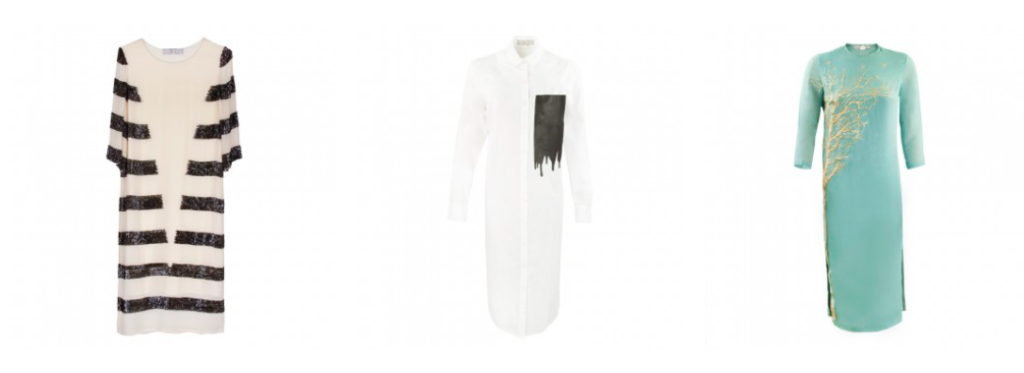
What designs resonate most with your customers? What are their favorite brands?
It really depends on where the customer is from. Our new ready to wear labels like Rimzim Dadu, Shift and11:11 are universally well received. Safomasi, Neon Store and Liz Jacob are go to brands for baby gifts. Home décor lines like Injiri, Objectry, Claymen and Prakrit are favorites of our shoppers in the US.
Participating in Fashion Revolution Day
This year you’re supporting Fashion Revolution Day, an annual campaign that raises awareness for the true cost of fashion by asking the powerful question, “Who made my clothes?” Why did you choose to get involved?
I decided to support FRD the minute I learned about the initiative. While we are passionate about our mission and hope that we are doing some good, at the end of the day we are only one company. The beauty of FRD is that it brings together others whose mission and philosophies are the same- to build awareness of where and how your clothes are made, and, ultimately, help people make better purchasing decisions.
How does Fashion Revolution Day tie into Indelust’s mission?
FRD stands for the exact opposite of what led to the Rana Plaza tragedy, which is also Indelust. But for the message to be truly impactful, it must translate into what motivates people to buy on a day to day level. FRD is about celebrating fashion that is inspired by creativity and uniqueness, which in turn is about cultivating and sustaining the artisans who make this possible. You can buy something that is aesthetically beautiful, and that beauty is enhanced by the philosophy inherent to its production.
How can others get involved in Fashion Revolution Day and, more importantly, how can they make a lasting impact?
The first step to getting involved comes from within, we need to be more curious about how our clothes are made and who made them. Get in contact with brands and ask them #whomademyclothes to discover the real people throughout the supply chain. We want more people asking these questions so together we can use the power of fashion to inspire change. At the end of the day, vote with your dollars.
Looking Ahead
Right now, many fashion designers are adapting their production models to compete with fast-fashion and increased customer demand – some are scaling back, some a producing more – what do you think about these changes?
We exist in a competitive marketplace, so of course everyone is trying to reach the end goal, which is profit. The question is how do you measure profit and are you properly quantifying all the costs? Is a company that shows an incredible economic ROI but pays slave wages and ruins the environments really the type of profit you want? These externalities eventually feed back into the system, and make us all collectively more poor. It is now starting to affect individual companies as well, but not enough.
Look, I don’t mean to sound like someone in an ivory tower. I don’t pretend to have all the answers, and Indelust has a more specialized customer than many of the companies competing in other segments of the market. I think the food industry is an example of the direction where fashion will go. Years ago processed foods with chemical dyes, etc. were the norm, and people put up with it because it was cheaper. But now we are more focused on the long term effects of this food on our bodies and the environment. I think it’s a matter of time before we look at fashion labels like this. Why not be part of those companies and individuals moving toward a better future rather than exploiting the sins of the past?
What is the biggest challenge ethical designers and brands face?
Coming up with beautiful products that people want to buy on their own accord, i.e. not soley for the ethical message or production. We need people to understand that the object is beautiful because of the way it was produced
Read more and get involved in Fashion Revolution Day.
Tell me and Indelust what you think on twitter using #WhoMadeMyClothes and #SlowDownMyClothes.
And, while you’re at it check out what the members of the Ethical Writers Coalition are saying about Fashion Revolution Day in these posts:
Sotela: We Chose to be American Made
Eleanor Snare: My Story with Clothes: A Fashion Revolution Week Haulternative
Green or Die: How to be Part of the Fashion Revolution
Kamea World: Boost Life Satisfaction Through Your Fashion Choices
Sustaining Life: Join the Fashion Revolution
Ecocult: How to Make Your Wardrobe Sustainable in 4 Steps
StyleWise: 3 Years of Fashion Revolution
Terumah: Haulternative Renting Dresses for Special Occasions
Leotie Lovely: Gone Green 2016 – Fashion Revolution
My Kind Closet: Haulternative – Making the Most of What I Have
Let’s Be Fair: Five Simple Ways to Kick a Fast Fashion Habit
These Native Goods: Haulternative for Fashion Revolution Week

